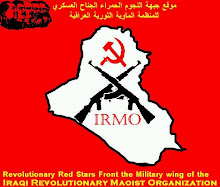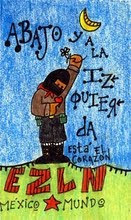Palestine: Children of Catastrophe
The Americans and the West in general are not well aware of the Palestinian experience. On the surface and at an emotional level, they are generally more sympathetic towards Israel, but this is mainly due to their lack of understanding or total disconnect with the human side of the Palestinian story.
Also one must recognize that the peculiar relationship between Israel and the West is deeply rooted in a long history of abhorrent Western anti-Semitism culminating in the Holocaust. Hence, it was a mix of sympathy, guilt, and religious institutions in America and Europe, which played an important role in shaping the lopsided view towards the Palestine Israel conflict.
World Zionist Organization
While the World Zionist Organization (WZO) was founded in Europe in the late 1800s, their plan to colonize Palestine did not start to take shape until the 1920s and 1930s. One major reason, up until 1917 and in addition to Palestine, the Zionist movement contemplated other options for this "Promised land" such as Uganda , Cyprus , Sinai and parts of Argentina.
They basically were willing to take any "real estate" property a colonial power was willing to sell them. But in November 1917, and to sway the purported "influential" Jewish opinion in the US on the war - at the time, the World Zionist Organization had very close relation with the German Kaiser and maintained its headquarter in Germany - the British Foreign Ministry issued a letter to a Jewish banker, Baron Walter Rothschild, promising the banker with a Jewish homeland in Palestine.
In 1920, and as the new occupying power, Britain appointed Herbert Samuel, a professed British Zionist as the high Commissioner for Palestine. Under his reign, Jewish immigration to Palestine increased exponentially and unlike the old Jewish residents, the new wave of European immigrants chose exclusive Jewish communities, segregated from the Native Palestinians and even from the old Jewish neighbourhoods.
With a lush of funds provided by the international Jewish National Fund (JNF), the new immigrants attempted to purchase land at any cost. Much like the extraneous prices they are willing to offer today for properties in East Jerusalem and Hebron.
As then and now, the Zionist organizations failed to acquire much, if any Palestinian owned properties. It is worth noting here, the National Jewish Fund (JNF) owned less than 7 per cent of Palestine when the UN voted to partition the land between its Natives and the new Jewish immigrants. Most of the properties the Zionists eventually purchased were from absentee landlords, mainly large feudal Lebanese landowners in the northern part of historical Palestine.
The aggressive land ownership program, combined with new exclusive communities, created a political and cultural chasm between the Native and the new settlers. At that point, it got even more complicated as this new European community closely allied itself with the despised colonial power.
Palestinian Resistance
In response, the Palestinians waged in 1936 one of the longest civil disobedient strikes in the history of Palestine, lasting for more than six months protesting the mandate power and its policies of transforming the demographics from the local Native population with the new European colonists.
After failing to quash the civil protest, Britain promoted, enabled, and armed Jewish military groups to help repress the local population. These same Zionist military groups metamorphosed into the Jewish Haganah, the nuclei of the future Israeli army, and became officially part of a joint contingent of British/Jewish military force suppressing the Native Palestinians.
Before its departure from Palestine, Great Britain had more military forces in Palestine than they had in the entire Indian continent.
We see well-organized systematic terror campaign by the Zionist paramilitary groups. The terror campaign results in the expulsion of 805,067 Palestinians and the destruction of 531 indigenous villages, representing roughly 85 per cent of the native population and the seizure of 92 per cent of the land.
Equally important to the Zionist campaign of terror, was the fact that more than 50 per cent (413,790) of the refugees were forced out of their homes by the Zionists' terror while Palestine was still ostensibly a British protectorate.
As an example, the infamous Massacre of Deir Yassin took place on April 9 1948, over a month before the departure of the British army form Palestine. When according to UN investigation reports the Jewish Irgun organization, under direct orders from Menachem Begin, slaughtered a large number of the Palestinian civilians in the village.
To justify murdering women and children, Begin explained that "The massacre was not only justified, but there would not have been a state of Israel without the victory at Deir Yassin."
Ethnic Cleansing
The overall Zionist campaign to ethnically cleanse Palestine was led by Ben Gurion, first Israeli Prime Minister, who consciously or unconsciously assigned to their military operations jargons tantamount with ethnic cleansing, from names such as matateh (broom), tihur (cleansing), biur (a Passover expression meaning "to cleanse the leaven") and niku (a Hebrew word for cleaning up).
This was a plan which Joseph Weitz, the head of the National Jewish Fund, described earlier in his diary on 20 December 1940 that "Not one village must be left, not one [Bedouin] tribe. The transfer must be directed at Iraq, Syria, and even Transjordan."
Jewish National Fund
Since 1948, the Jewish National Fund (which owns 85 per cent of land in Israel ) has led an international scheme to cover up the destroyed Palestinian villages with a specious environmental forestation campaign promoting the planting of trees in Israel. The JNF boasts that it "… has planted over 240 million trees in the land of Israel ".
The JNF does not, however, disclose to its unsuspected donors that at least eighty-six of these forests and parks are built over the ruins of destroyed Palestinian villages. As an example, the well-known Israeli Canada Park was built on the ruins of the ethnically cleansed villages of Emmuas, Yalu and Bayt Nuba; the trees in Biriya Forest grow over the foundation of the village of Amuka ; the town of Reihaniyeh is buried under Ramat Menashe Park and the remains of Ajur are fertilizing the greenery in Park Britain.
Wherever the JNF did not reforest what were once peaceful villages and as part of Israel 's conjured history, Israel bestowed Hebrew pseudonyms replacing the Native names of Palestinian towns. Thus, Tel Rabi became Tel Aviv, Lubya turned into Lavi, Al Zeeb transpired into Gesher Haziv, Saffuriyya into Tzippori and Beit Jala metamorphosed into Gilo.
The People's Connection to the Land
The Zionists consider the mere existence of Palestinians whether under occupation or in refugee camps represent a negation to their ideology, which denies the Palestinian people as a collective national identity.
Israelis fail to understand people's connection to the land, for other than their religious patrimony, the people of Israel never in modern history have they had to experience that kind of relationship.
Throughout their history of oppression in Christian Europe, Jews had accepted defeat and lived psychologically as a defeated community all the way through the Holocaust. Through tormenting Palestinians under occupation and in refugee camps, Zionists are attempting to mirror their own experience of psychological defeat on the people of Palestine.
To their chagrin however, the refugees' identity became an expression of nationhood and defiance, rather than privation and compliance. As Israeli writer Danny Rubinstein described the Palestinians in his book: Every people in the world live in a place. For Palestinians, the place lives in them.
Jamal Krayem Kanj, Children of Catastrophe: Journey from a Palestinian Refugee Camp to America. Garnet Publishing, 2010.
Read interview with Jamal Krayem Kanj: Intifada Palestine www.intifada-palestine.com
--
Patrick Mac Manus
Copenhagen (Denmark)




